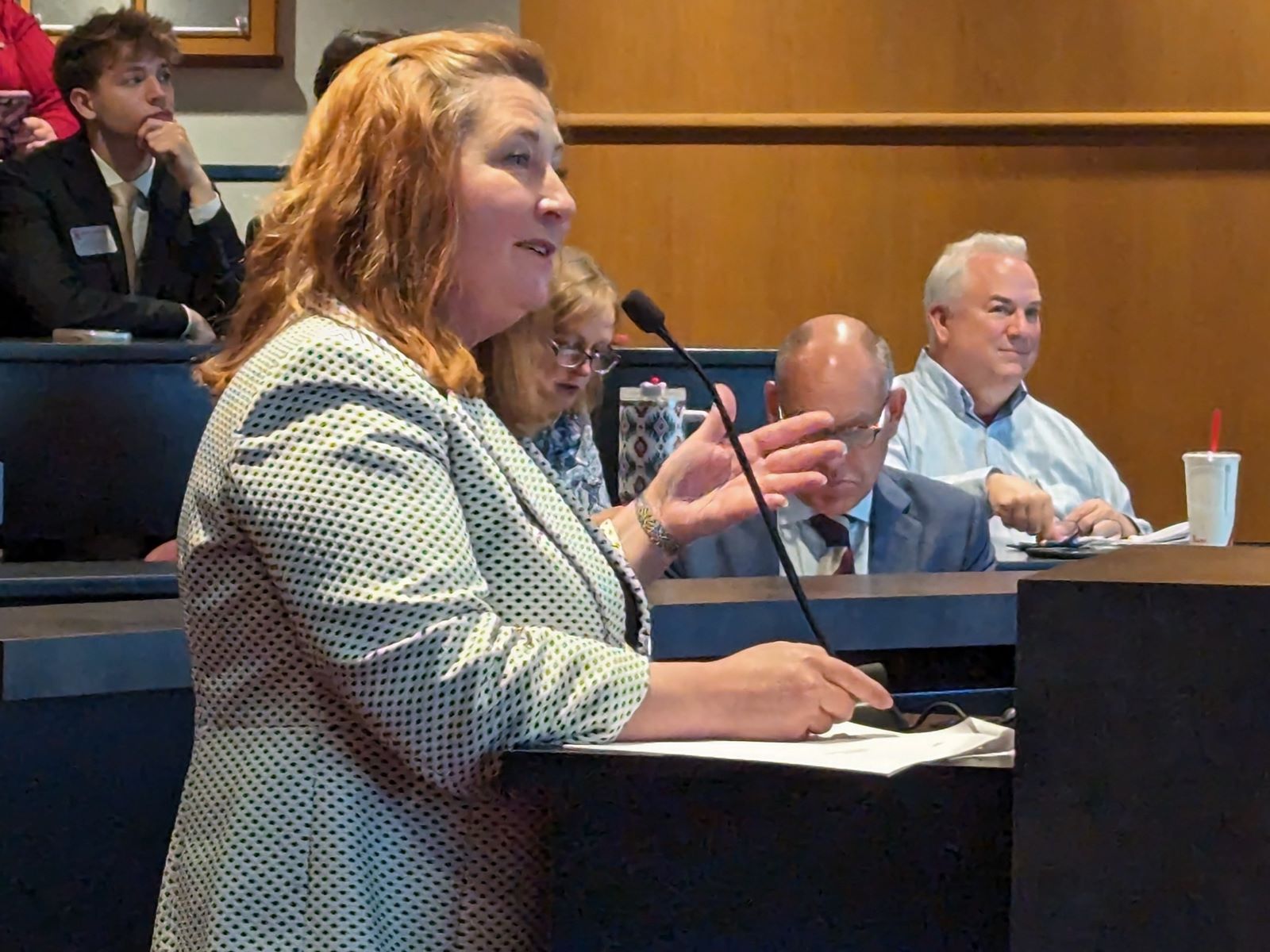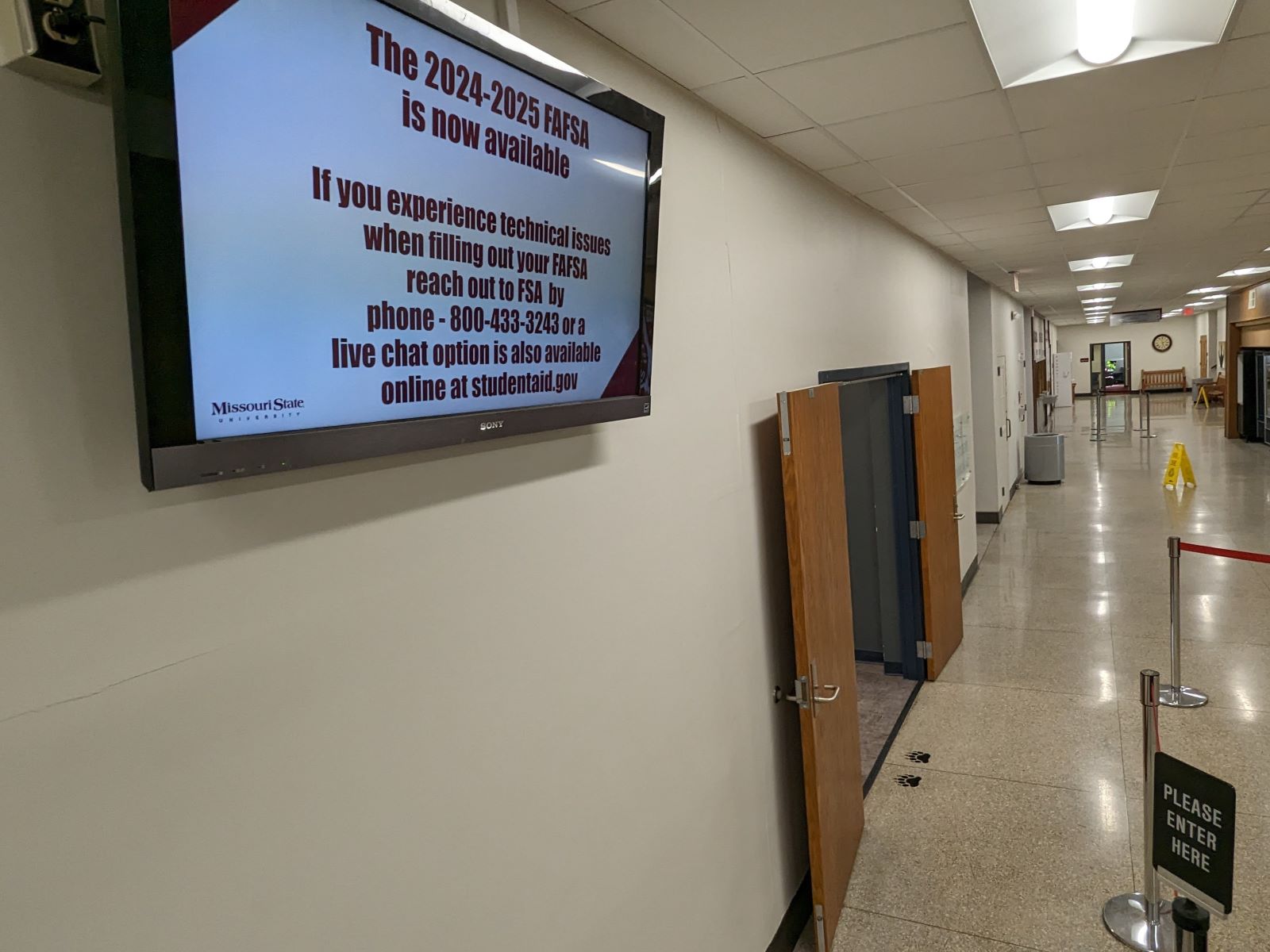A glitchy process to apply for student financial aid is already affecting enrollment projections at Missouri State University. That could affect the university’s financial picture.
MSU is currently down 5.8% in the number of deposits paid by freshman students enrolling for the fall semester of 2024. The Missouri State University Board of Governors heard the update from Executive Vice President Zora Mulligan during its regular meeting May 9.
Applications for first-time, new-in-college students are up by 4.1%, Mulligan said, from 11,528 in 2023 to 11,998 in 2024. Admits for those students are also up 2.3%, from 9,046 students to 9,252 in the same two semesters.
Mulligan told the board that the cause is mainly because of a new Free Application for Federal Student Aid (FAFSA) process. She also expects the number of applications to rebound, thanks to work done by the admissions and financial aid departments at Missouri State.
“That’s the result of the team having paused in January and February, looking at where we were going to be, and recognizing that we needed a bigger top of the funnel,” Mulligan said. “They put a lot of effort into increasing the number of applications, and that’s unusual. Usually by the spring you feel like you have identified most of the people who are going to come to college in the fall.”

The FAFSA is a crucial first step in applying for student aid. Colleges and universities require a completed application in order to determine whether a student qualifies for scholarships and financial aid. A completed FAFSA form is required for students to receive federal student loans. Students need that aid in order to make payment deadlines for their tuition.
But a streamlined process introduced by the U.S. Department of Education has not gone smoothly. Students have reported glitches and crashes that prevent the application from being submitted.
The university twice pushed back its priority deadline this school year, moving as late as May 1. While an application can be submitted any time, meeting the deadline helps lock in participation in the MO State Access Award program, which grants free tuition and fees for Pell-eligible Missouri students.
As of April 19, only about a third of graduating high school seniors in the nation had completed a FAFSA form, Mulligan said, and the completion rate is down about 31% from last year. Missouri State’s number is down about 25%, she said.
“So when we think about all of the students that we need to encourage into higher education, and Missouri State specifically, we’re starting with a much smaller number of students,” Mulligan said. “There are lots of people who haven’t even taken the step of filling out a FAFSA.”
Funding tied to enrollment level
The MSU Board of Governors is evaluating its operating budget for the upcoming school year. In a normal year, roughly two-thirds of the budget comes from tuition and registration fees. In April 2024, the board approved an about 4% increase in those fees. The budget is expected to be approved in June.
Mulligan said deposits going down from 2,683 to 2,528 is a number that “keeps me up at night,” Mulligan said. But signs indicate a rebound, and improvement over the next several weeks, she said.
“The gap has been closing in the last couple of weeks as we have been able to get financial aid offers out,” Mulligan said. “We’ve been having a really positive response from the students who have been waiting for that information.”

Nationwide problems with aid application process
The streamlined process introduced by the USDE was intended to reduce the amount of time needed for filling out the FAFSA, and to increase eligibility for low- and middle-income students.
One of the big changes is a shift away from the Expected Family Contribution to a new formula called the Student Aid Index. The new application features an option to have information contributed directly from the Internal Revenue Service. That effectively removed a step where families would have to make a separate request of the IRS to collect information.
The glitches and errors with FAFSA have affected students nationwide. Students usually know by now where they are going to college in the fall and how they are going to pay for it.
The number of students who have successfully submitted their FAFSA is down 29% from 2023, however, according to a report from the Associated Press. Not only do those delays affect the students, but also the schools hoping to educate them.
Kim Cook, CEO of the National College Attainment Network, told Congress in April that the drop in college enrollment could make COVID-19 pandemic decreases seem mild.
Missouri State Univeristy President Clif Smart said that MSU is “well ahead” of other universities in getting out financial aid offers, and said he hopes that progress will mitigate a drop in enrollment.
“Our team was really on top of it. There are many universities that still have not gotten financial aid offers out,” Smart said. “And that’s because of the vast difficulty we are all dealing with.”

Smart also said that if Missouri State manages to reach enrollment levels similar to the current school year, the freshman class will be another big one. MSU broke a record for freshman enrollment in the 2023-24 school year. 2,782 freshmen accounted for the biggest fall-to-fall increase in the university’s history, with a 22.1% increase of 504 students.
Another encouraging sign, Mulligan said, is the number of returning students. Preliminary data shows enrollment of students continuing their education is up by 8%, from 9,366 to 10,102. Slight decreases are predicted for graduate and international students, leading Mulligan to predict that enrollment could be “close to flat.”
Still, the prospect of reduced enrollment has Missouri State University officials nervous about raising revenue. Mulligan said the university’s marketing plans include encouraging more students to be persistent working on the FAFSA, and reaching out to potential students not enrolling in college.
“These are numbers that, when you look at them, it’s hard to not be concerned about the long-term implications,” Mulligan said. “Not just for our university or the state, but the nation.”

